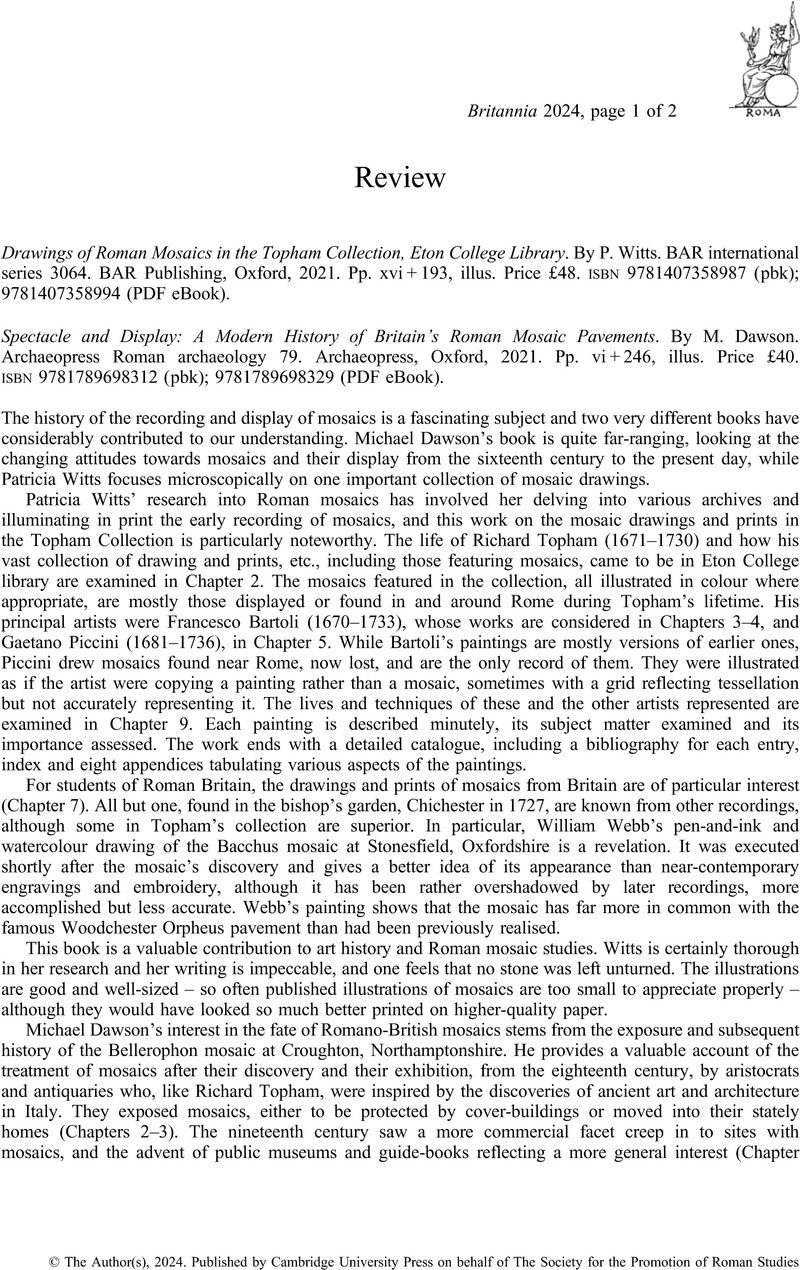No CrossRef data available.
Drawings of Roman Mosaics in the Topham Collection, Eton College Library. By P. Witts. BAR international series 3064. BAR Publishing, Oxford, 2021. Pp. xvi + 193, illus. Price £48. isbn 9781407358987 (pbk); 9781407358994 (PDF eBook). - Spectacle and Display: A Modern History of Britain's Roman Mosaic Pavements. By M. Dawson. Archaeopress Roman archaeology 79. Archaeopress, Oxford, 2021. Pp. vi + 246, illus. Price £40. isbn 9781789698312 (pbk); 9781789698329 (PDF eBook).
Review products
Drawings of Roman Mosaics in the Topham Collection, Eton College Library. By P. Witts. BAR international series 3064. BAR Publishing, Oxford, 2021. Pp. xvi + 193, illus. Price £48. isbn 9781407358987 (pbk); 9781407358994 (PDF eBook).
Spectacle and Display: A Modern History of Britain's Roman Mosaic Pavements. By M. Dawson. Archaeopress Roman archaeology 79. Archaeopress, Oxford, 2021. Pp. vi + 246, illus. Price £40. isbn 9781789698312 (pbk); 9781789698329 (PDF eBook).
Published online by Cambridge University Press: 10 May 2024
Abstract
An abstract is not available for this content so a preview has been provided. Please use the Get access link above for information on how to access this content.

- Type
- Reviews
- Information
- Copyright
- Copyright © The Author(s), 2024. Published by Cambridge University Press on behalf of The Society for the Promotion of Roman Studies


